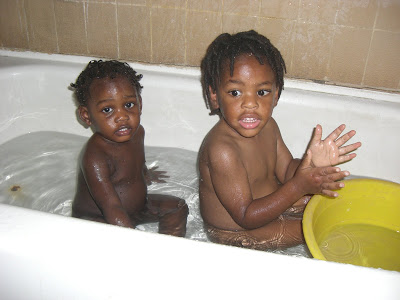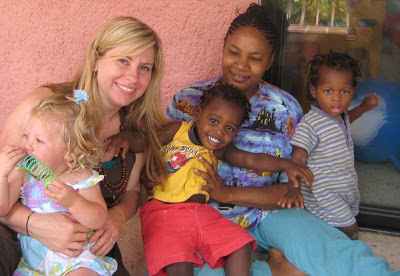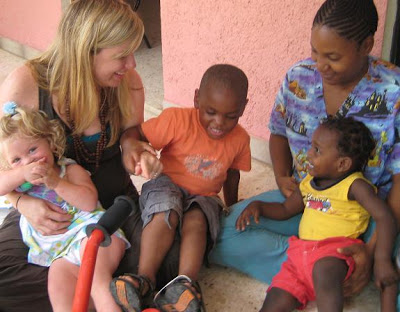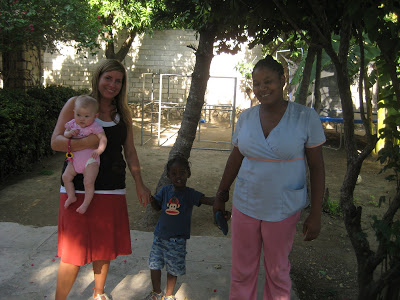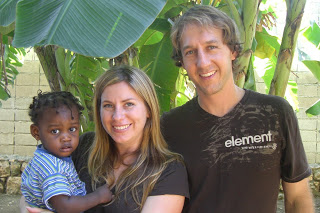Many adoptive parents create a Lifebook for their kids – it’s basically a scrapbook that tells the story of their life before placement. We made one for Jafta when he was young, and it includes pictures of him with his birth family, with his foster mom, and pictures of us on the day he joined our family. We still read it often and it has been a great way to make adoption a part of our daily language. (It’s also probably one of the reasons that India inquires about her own adoption so often. She’s a bit disappointed that she doesn’t have her own adoption book).
I ordered one for Kembe a few weeks ago. It has been really helpful for us. The circumstances of his homecoming were so different than we imagined. Because of the earthquake, we never got the chance to bond with him over several days in Haiti, and spend time with his caregivers and allow him to see us relating to the people he came to know and trust in his formative years. We had also been concerned about the way he has refused to talk about life in Haiti. I read a lot of adult adoptee narratives, and I often hear about how damaging it can be when parents ignore the life their child had before adoption. But with Kembe, he seemed to be rejecting that life on his own. Since his first month home, he has refused to speak in Creole, and gets angry when we do. When we talk about Haiti, or ask about his nannies, he will angrily say, “Don’t say that!” If I pray for his nanny by name (the one I know he adored), he will say “I don’t like Fifi.” I know this is not true. But I think in his 3-year-old brain, he feels like he has to close off that part of his world in order to fit into ours.
When I made his lifebook, I was careful to include lots of pictures of his friends and nannies from Haiti. I am so thankful for the photos I got to take on our multiple trips, and so grateful to have pictures of us with him as a small baby. I am also so grateful to have photos of he and I with his nanny. I know he probably doesn’t remember these moments, but I think the lifebook helps to create a narrative for him . . . a narrative of our family being intertwined with his life in Haiti.
When the book arrived, he was so excited about it. He loved seeing pictures of all of the nannies holding Karis (and holding India when she was a baby, too). He loved the pictures of he and Jafta splashing in the bathtub two years ago, of us holding him as a baby, and all of the pictures of us with his friends in Haiti. On the last page, I included a picture of each of his friends with their new families, and a photo of our family.
I really believe this lifebook has said more to him than anything I could say in words. It’s like something clicked. He gets it now – that we were there all along, that we loved his nannies, that they loved us . . . that he can love us both and talk about it with us. He carries this book around everywhere he goes. The cover has already worn off. (And luckily for me, I can order more copies on Shutterfly.) He has taken it to school for show-and-tell several weeks in a row. He sleeps with it. We sit and read it together, and point to all of his friends. Frankie, Sammy, Gino, Angelo, Ricardo, Richardson. Mama Beth, Mama Shelly. Fifi. NouNou. HAITI.
It has opened up a dialogue that needed to be there, and given him permission to love THEM and to love US at the same time. And it’s shown him that there is deep affection and a history between the people who cared for him then, and the people who care for him now. It’s a simple little book, with now-tattered pages. But for him, it’s so much more.

